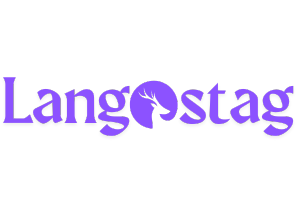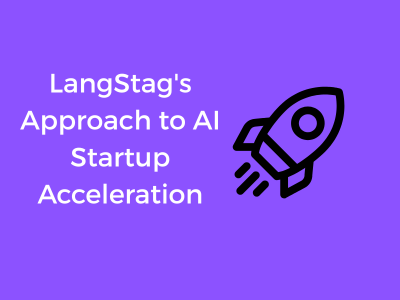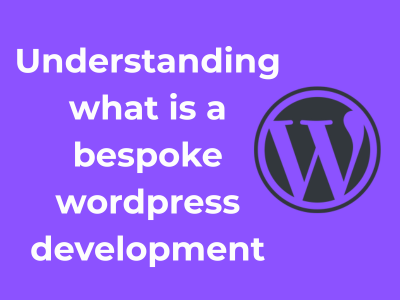Every great startup begins with a spark—a moment when a problem meets the right solution, and sparks fly! At LangStag, we know this to be true and embrace the art of nurturing ideas. But how do you transform an abstract concept floating in your mind into the potential for an AI-driven Minimum Viable Product (MVP)? It all starts with purposeful brainstorming and structured exploration of possibilities. Ideas that genuinely resonate are those that solve real problems. At LangStag, we encourage our teams and startups to ask themselves “What issues are people facing, and how can AI make their lives better?”
- Focus on real-world pain points: Don’t just chase the latest AI trends. Look for unmet needs.
- Stay user-centric: Constantly think from the perspective of your target audience.
- Keep it simple: The best problems to tackle with AI aren’t always the most complicated, but ones where automation or intelligence truly adds value.
Unstructured Creativity First, Ruthless Filtering Second
During the initial generation of ideas, letting creativity flow freely is key. That’s why LangStag uses techniques like mind-mapping, collaborative brainstorming sessions, and even storytelling workshops to generate a wide array of possibilities. It’s exciting to dream big!
However, the second step is just as critical—ruthlessly narrowing down these ideas. We apply filters like:
- Feasibility: Is there existing AI technology that can address this concept?
- Relevance: Is this idea solving a problem significant enough to justify investment?
- Scalability: Will this concept have the potential to evolve into something bigger down the line?
Applying these criteria ensures we don’t just pursue ideas that are exciting on paper but lack long-term potential.
The Role of Passion and Purpose
At LangStag, we believe in ideas with heart. Building is hard work, so there has to be something in the concept that excites and motivates the people working on it. If a team isn’t truly passionate about solving the problem, it will show in the lackluster execution.
From Spark to Concept
Once we’ve identified a promising concept, LangStag takes the first step of transforming the “idea spark” into something more tangible: a defined hypothesis. This process involves writing down key details like:
- The Problem: What are we solving?
- The AI Angle: Why is AI the ideal tool for the job?
- Target Audience: For whom is this solution being created?
This isn’t about building something just yet—rather, it’s a way to ensure the idea has structure and focus. It’s our way of laying down a north star for further exploration and validation (and yes, we’re big believers in validating early, but more on that in other stages!).

Validating the Core: Why Early Proof is Key for AI Startups
Starting an AI venture feels thrilling—you’ve got the idea, the buzz, and a dream that could disrupt the world as we know it. But here’s the real talk: no matter how groundbreaking your concept seems, the path to success starts with one critical step—validating the core of your idea. At LangStag, we live and breathe by this philosophy, and here’s how and why you should, too.
The “Why” Behind Validation
Imagine setting out on a road trip without double-checking your car’s gas tank—it’s risky, right? The same logic applies to AI startups. You need to confirm that your core concept has a solid foundation. Early validation signals whether your idea truly solves a critical problem and whether there’s a real audience willing to embrace it.
Plus, let’s be honest: building AI solutions can get capital-intensive. Proving your concept early on saves time, money, and effort. And, crucially, it keeps you from pouring resources into a product that nobody really wants. This step allows you to fine-tune before fully committing—which is exactly where LangStag’s rigor comes in.
Steps to Validate Your Core Idea
Don’t think of validation as an intimidating hurdle. It’s more like a set of checkpoints to ensure you’re moving in the right direction. Here’s how LangStag guides you through it:
- Step 1: Define the Problem: Is your AI solution addressing a specific, well-defined problem? We emphasize crafting a clear problem statement, one you can articulate in a sentence or two.
- Step 2: Engage Early Adopters: Reach out to your target audience as soon as possible. Ask them questions, share mockups, and gauge their reaction. Their feedback is invaluable when shaping initial versions of your product.
- Step 3: Prototype Quick Wins: Build a simple prototype or proof-of-concept model. The focus here isn’t perfection but demonstrating your value proposition effectively.
- Step 4: Measure and Iterate: Metrics matter! Measure key performance indicators tied to your concept. If outcomes suggest potential, improve iteratively based on user input.
The MVP Connection
Here’s a golden nugget for every AI startup—validation doesn’t end with one round of approval. It should bridge directly into creating your Minimum Viable Product (MVP), a streamlined version of your grand idea, tailor-made to showcase its key capabilities in action. Think of each customer-tested iteration as another layer of proof that reinforces your foundation.
Common Pitfalls (and How to Dodge Them!)
To save you unnecessary roadblocks, here are a few common mistakes—and LangStag’s counterstrategies:
- Skipping Validation Because You Believe in Your Idea: Hey, we love confidence, but it’s smarter to test assumptions early.
- Using Biased Feedback Sources: Bring people on board who will give you honest, sometimes tough opinions—don’t just talk to your friends.
- Overcomplicating the Prototype: Stick to simple. You’re not aiming for polish, just proof!
Building Smarter, Not Harder: LangStag’s Efficient Development Blueprint
Let’s be honest—building an AI startup can feel like climbing a mountain. With so much potential wrapped into a single idea, where do you even begin? Well, at LangStag, we’re firm believers in working smarter, not harder. Here’s how our efficient development blueprint makes all the difference in turning innovative ideas into an actionable Minimum Viable Product (MVP) without overwhelming your resources or losing sight of the big picture.
What Does ‘Smarter’ Really Mean?
When we say “smarter,” we’re talking about being resourceful, strategic, and clear-headed when plotting your AI product’s roadmap. Too often, startups dive into development with lofty goals but no clear plan, stretching their team too thin and burning through funding. Not here. LangStag thrives on lean, efficient strategies that maximize impact while minimizing waste. Less chaos, more clarity—sounds good, right?
The Ingredients of an Efficient Blueprint
Here’s where the magic happens—LangStag’s blueprint isn’t a one-size-fits-all template. It’s a proven framework tailored to evolving AI startups. Let’s break it down into bite-sized pieces:
- Focus on Features That Matter: You might have a billion ideas for your AI product, but starting with the core value is key. What is the one problem your product will solve better than anyone else? LangStag hones in on this and builds out from there, ensuring you don’t waste time developing unnecessary bells and whistles out of the gate.
- Lean Development Practices: Forget bloated teams and over-complicated processes. LangStag puts agile methods into practice, prioritizing small, cross-functional teams that can quickly adapt and deliver meaningful progress. The goal? Iterate quickly, learn often, and stay nimble.
- Prototyping Like a Pro: One of the smartest moves you can make is turning ideas into prototypes early. Visualizing ideas through clickable mockups or basic AI algorithms helps identify flaws and spark better concepts long before heavy development begins. LangStag ensures these prototypes are created to inspire feedback and fine-tune the MVP’s direction.
Working Smarter Isn’t About Rushing
One common misconception is that being efficient equals rushing through development. But efficiency isn’t about shortcuts; it’s about precision. LangStag balances speed with care, ensuring the team spends time on what truly matters—building something functional, scalable, and user-oriented. It’s a marathon, not a sprint, and smarter planning helps you pace yourself for long-term success.
A Handy Tip: Embrace Automation Early
Don’t sleep on the power of automation, friends! LangStag builds automation into the development process whenever possible, from testing to deployment. This frees up your engineers to focus more on innovative tasks rather than repetitive ones, making “working smarter” a reality rather than just a buzzword.
Why Efficiency Isn’t Just Nice—It’s Essential
The AI startup space is competitive and fast-paced. By using an efficient development blueprint, LangStag ensures that startups can create stunning MVPs that impress investors and users without breaking the bank or exhausting the team. In the end, working smarter gives you an edge, allowing you to reach your goals faster while staying sustainable. After all, who doesn’t want less stress and more progress?
Essential Tools & Tech: The Backbone of Successful AI MVPs
When it comes to building a successful AI MVP (Minimum Viable Product), the tools and tech you choose can make or break your success. Think of this step as choosing the right gear before climbing a mountain — equipped correctly, your journey will be safer, smoother, and more rewarding. LangStag knows this well and emphasizes that the foundation of any AI startup is rooted in leveraging the right essentials. Let’s explore how LangStag approaches this crucial aspect.
Why Tools and Technologies Matter
Imagine trying to weave a masterpiece with blunt needles and frayed threads. That’s what happens when an AI startup skimps on understanding and integrating the right tools and technologies. The landscape of AI startups is competitive, and the frameworks, languages, and platforms you adopt will impact everything from development speed to product performance.
LangStag’s philosophy? Don’t reinvent the wheel, but also don’t settle for tools that don’t align with your vision. They advocate choosing technologies that not only address your immediate needs but also set you up for scalability and longevity.
LangStag’s Go-To AI Toolkit
Over the years, LangStag has cultivated a curated selection of tools that align with their MVP-first methodology. Here’s a peek into their recommended toolbox:
- Programming Languages: Python is often the first love in AI development — extensive libraries, community support, and its readability make it a go-to. For speed and performance, LangStag sometimes incorporates Julia and C++ in specialized cases.
- Frameworks and Libraries: Tools like TensorFlow and PyTorch dominate their go-to list for deep learning. Scikit-learn is another favorite for machine learning, especially for those seeking robust models with simpler implementations.
- Data Handling: For any AI product, handling data efficiently is make-or-break. LangStag leans on Pandas, NumPy, and Apache Spark to process data, while tools like SQL and MongoDB ensure smooth storage and retrieval.
- Cloud Platforms: Cloud solutions like AWS, Google Cloud, and Azure are staples for delivering scalable and cost-effective MVPs. Why spend on physical infrastructure when you can leverage the cloud?
- DevOps & Deployment: LangStag focuses heavily on seamless transitions from development to delivery. Docker and Kubernetes ensure their applications remain containerized and easily deployable across environments.
How to Choose the Right Tools for Your AI Startup
It’s tempting to dive into the most cutting-edge technologies just because they’re buzzing in the industry. However, LangStag insists that the right tools are the ones that fit your project’s scope, team capabilities, and goals. Here’s their advice:
- Prioritize Simplicity: Early-stage startups don’t need to overcomplicate tech stacks. Stick to user-friendly frameworks and libraries that your team can master quickly.
- Consider Scalability: Select platforms and tools with future growth in mind. While your MVP is minimal, you’ll want technology that scales with your vision as more users come onboard.
- Focus on Cost-Effectiveness: LangStag always keeps budget in check. Opt for open-source solutions, starter-tier cloud platforms, and cost-efficient development tools when funds are limited.
- Lean on Communities: An active developer community can be a game changer. The larger the tool’s support network, the faster your team can troubleshoot issues and learn best practices.
The Human Side of Technology
LangStag believes there’s something even more critical than picking the right tools: building the right team to wield them. A toolbox, no matter how advanced, will falter in inexperienced hands. Surround yourself with curious, adaptable, and enthusiastic talent who view learning new tech as an adventure rather than a chore.
At the end of the day, tools are just enablers — handy sidekicks in the superhero story of your AI startup. LangStag’s experience shows that combining the right tech with smart decision-making and a can-do attitude is the ultimate formula for building impactful MVPs.
Overcoming Challenges on the Way to a Scalable AI Solution
The road to creating a scalable AI solution isn’t always a smooth one. But at LangStag, we firmly believe that every challenge presents an opportunity to grow, innovate, and get smarter. Let’s dive into how startups can navigate these roadblocks effectively and keep their AI ventures on the path to success.
1. Knowing What You’re Up Against
One of the biggest mistakes new AI startups make is underestimating the complexity of challenges that lie ahead. From handling massive datasets to refining machine learning models and anticipating user needs, the road to scalability can be overwhelming. The first step? Acknowledge these challenges—and plan for them with intention.
Tip: Break your challenges into categories: technical (e.g., optimizing neural networks), operational (e.g., data acquisition), and market-based (e.g., customer adoption). This will help you tackle them systematically.
2. Dealing with Limited Resources
Let’s face it: most startups don’t have endless budgets or teams of hundreds. But that doesn’t mean they can’t compete. At LangStag, we teach startups how to do more with less. This means prioritizing key features in your AI solution and making use of existing tools rather than constantly reinventing the wheel.
- Leverage open-source frameworks: Pre-trained models from TensorFlow, PyTorch, or Hugging Face can offer a strong starting point.
- Cloud services: AWS, Google Cloud, and Azure allow you to scale up or down as your needs evolve—without costing a fortune up front.
- Lean staffing: Focus on a small but talented team that can juggle multiple roles effectively.
It’s all about prioritization and being resourceful!
3. The Curse of Ambiguity
AI projects often face ambiguity: Is your dataset diverse enough? Will your model perform well across different scenarios? Can your infrastructure handle surging user demand as your solution gains popularity?
To overcome this obstacle, LangStag emphasizes measurable goals. Define clear success metrics—accuracy, precision, and recall for models are examples—and obsessively validate them along the way. Iteration is key. Each challenge can be resolved when you focus on concrete data rather than hoping for the best.
4. Scaling Responsibly
What happens when your AI finally takes off? Scaling quickly yet responsibly is a balancing act. It’s important to have both the technical and ethical frameworks in place.
Here’s how LangStag teaches startups to approach scaling:
- Optimize algorithms: Ensure that your AI algorithms are adaptable and computationally efficient. This will save both time and server costs in the long run.
- Monitor performance: Continuous monitoring ensures your AI doesn’t degrade as it processes more data or grows in complexity.
- Plan for ethics: Scalability is about trust, too. Build user confidence by addressing bias, privacy, and fairness from the very beginning.
5. Asking for Help
Asking for help is not a weakness—it’s a strength. At LangStag, we encourage founders to seek mentorship and guidance when they encounter obstacles. Whether it’s reaching out to AI experts, tapping into startup communities, or even joining mastermind groups, external insights can provide fresh perspectives and creative solutions.
Pro Tip: Consider partnerships early on. Collaborating with universities, larger tech firms, or even other startups can help you navigate murky waters more quickly.
Learning from Benchmarks: Real-World Applications for AI Startups
When it comes to AI startups, there’s nothing quite as inspiring—or as critical—as diving into real-world benchmarks. At LangStag, we believe benchmarks aren’t just numbers; they’re stories of success, lessons learned, and roadmaps for those who dare to innovate.
Why Do Benchmarks Matter?
Let’s face it—no matter how unique your AI startup idea may be, you’re not operating in a vacuum. Benchmarks provide clarity and context. They allow you to understand how similar companies have navigated the choppy waters of MVP development and carried their solutions to market success.
Here’s why they’re essential:
- Setting realistic goals: Benchmarks reveal what’s achievable within specific timelines, resources, and market conditions.
- Comparative performance: Understanding how others succeeded (or failed) gives you a yardstick for your progress.
- Uncovering industry norms: They help you understand customer expectations and determine how to meet—or exceed—them.
How LangStag Embraces Benchmarks
At LangStag, we don’t just study benchmarks; we dive into them headfirst! Here’s how we approach it:
- Case Study Deep-Dives: Every time we onboard a new idea, we look at 2–3 real-world examples of AI startups that have tackled similar challenges. What did they do right? What would we do differently?
- Learning from Failures: We believe there’s as much to learn from failures as from successes. We look at startups that stumbled and analyze *why* they didn’t make it.
- Industry Trends: LangStag keeps an eagle eye on emerging technologies, customer behaviors, and gaps in existing solutions. These insights are pivotal when refining an MVP.
Tangible Lessons for AI Startups
So, what can you, an ambitious founder or team, learn from benchmarks?
The simplest lesson is this: learn from others—both their triumphs and their missteps—to maximize your chances of success. Here are the top takeaways:
- Focus on your end user: Study what audiences valued most in successful startups. Did they prioritize speed, accuracy, or user experience? Align your MVP accordingly.
- Iterate with intent: Startups that rush features without clarity often fail. Analyzing benchmarks shows the value of slow, intentional improvements.
- Adopt what works: If something isn’t broken, you don’t need to fix it. Successful startups often use similar tools or frameworks, and studying these trends can save you valuable time.
Benchmark Success with LangStag
At LangStag, we go far beyond simply observing benchmarks—we embed them into our playbook to help startups make informed decisions. Although every AI solution has its unique challenges, studying real-world applications can accelerate the journey to an impactful MVP.
If you’re starting your AI journey, take the time to explore the stories around you. Who knows? The next big benchmark in the AI startup world might have your name on it—or LangStag’s signature approach shaping it.
Timing It Right: Launching and Iterating LangStag-Style
When it comes to AI startups, timing matters. At LangStag, we’re all about helping innovative thinkers bring their brainchildren to life, but we firmly believe there’s a sweet spot for releasing your Minimum Viable Product (MVP). Let’s dive into how we approach launching and iterating AI-driven solutions.
Why Timing Isn’t Just About the Calendar
In the startup world, the phrase “timing is everything” gets thrown around a lot. But at LangStag, we see it differently: timing is about readiness, not just dates. Whether you’re launching your first MVP or iterating on an early version, the question isn’t so much when you’re putting it out there—it’s why now? Are the conditions right for your product to succeed?
In the AI landscape, things move fast. Innovations can quickly become the new standard, and audiences are always hungry for the next big thing. At the same time, rushing your MVP to market without a clear validation and feedback loop can lead to missed opportunities. Our approach? Balance speed with quality.
Pre-Launch Checklist: Setting the Stage for Success
Before launching, it’s critical to ensure certain elements are in place. Here’s our go-to checklist:
- A Clear Value Proposition: Why should anyone care about what you’ve built? Make sure your MVP solves a real problem effectively.
- A Well-Defined Target Audience: Understanding your early adopters is essential. Who are the people most likely to benefit from your solution, and how can you reach them?
- User Readiness: Have you conducted user testing to iron out rough edges? Feedback at this stage is gold.
- Tech Stability: Even as an MVP, your AI product needs to be reliable. Bugs and crashes kill momentum.
- A Scalable Roadmap: This is just the beginning. Ensure your MVP’s design allows room for growth based on feedback and market demands.
Iterate Like You Mean It
Congratulations—you’ve launched the MVP! Now comes the equally important part: iteration. At LangStag, we weave iteration into the very DNA of AI startup growth. Here’s how:
- Monitor Without Losing Focus: Use analytics to track performance and user behavior. This helps you gauge market fit, but don’t get distracted by vanity metrics (like downloads) that don’t reflect actual usage.
- Collect Real Feedback: Your users are your MVP’s greatest teachers. Surveys, usability testing, and interviews can illuminate what’s working and what’s not.
- Improve Incrementally: Small, steady updates often work better than sweeping changes. This keeps users engaged without overwhelming them.
- Stay Flexible: Be open to pivots. If early trends suggest a different feature has more potential, don’t hesitate to adjust course.
Case in Point: LangStag’s Results-Driven Launch Philosophy
Some of the most successful AI startups we’ve worked with have taken this launch-and-iterate approach head-on. By timing their MVP releases strategically and embracing user-driven iteration, they’ve been able to turn modest beginnings into industry-leading platforms.












